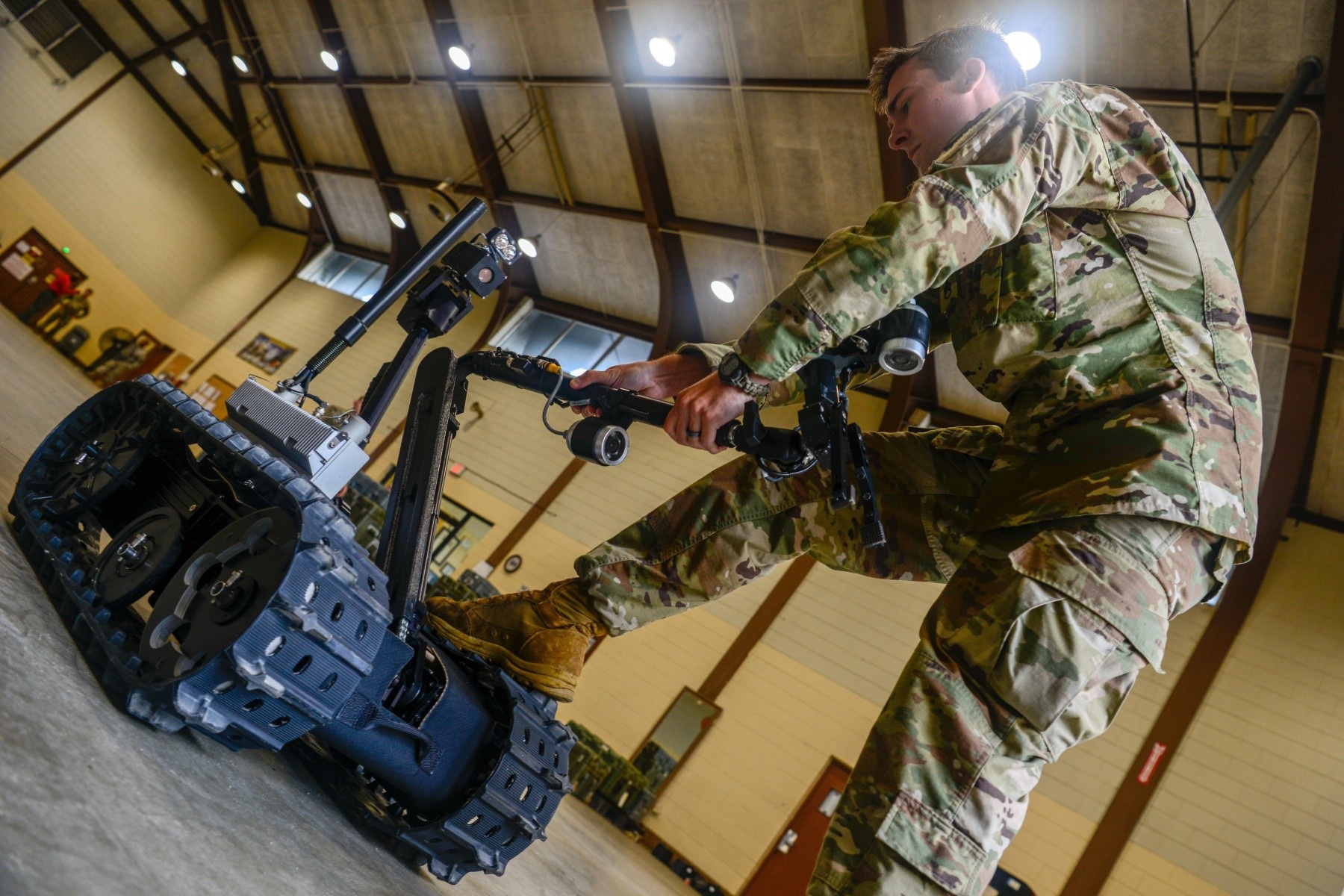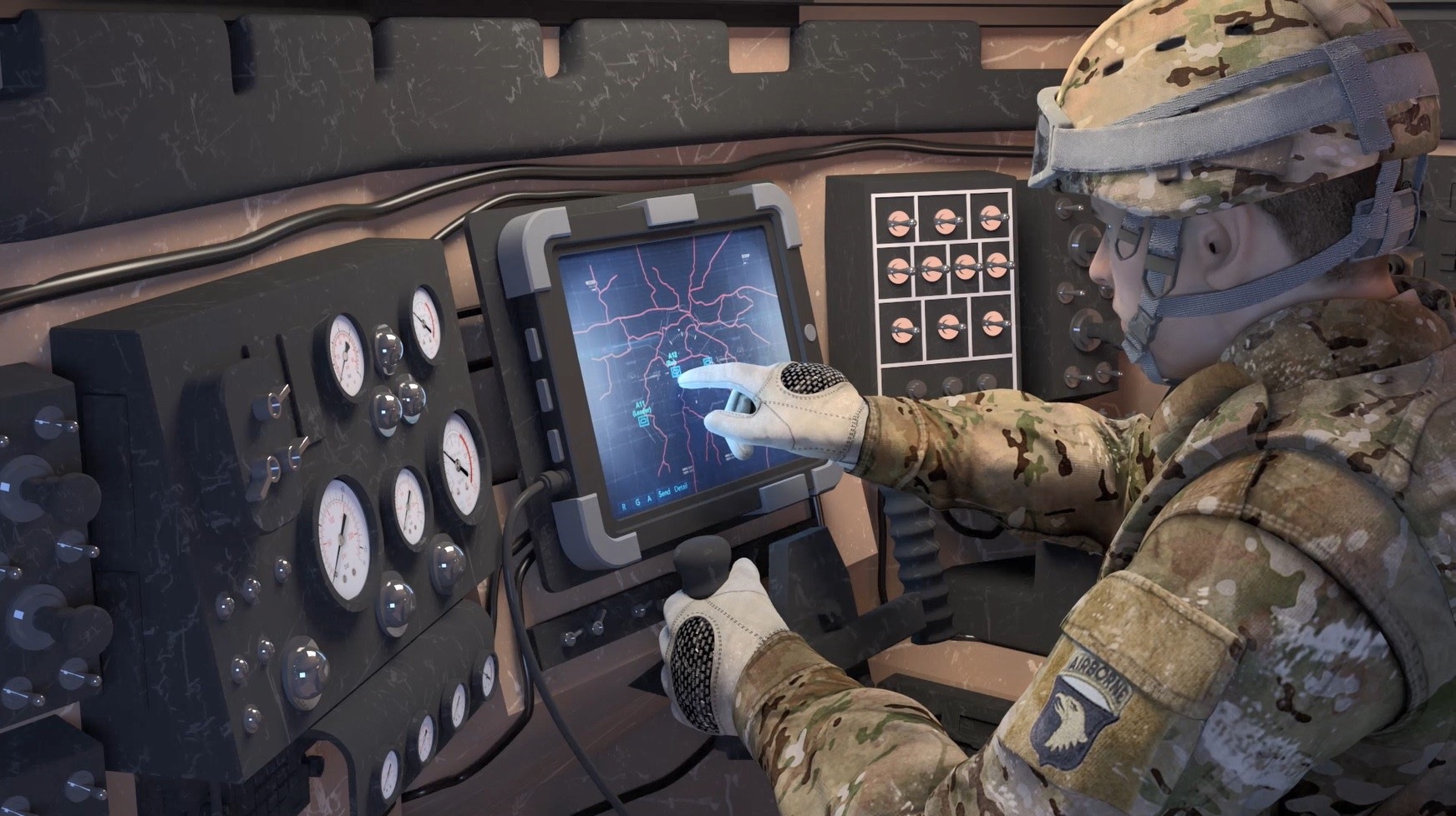ABERDEEN PROVING GROUND, Md. — Army and Arizona State University researchers identified a set of approaches to help scientists assess how well autonomous systems and humans communicate.

These approaches build on transformational scientific research efforts led by the Army’s Robotics Collaborative Technology Alliance, which evolved the state of robots from tools to teammates and laid the foundation for much of the service’s existing research into how humans and robots can work together effectively.
As ideas for autonomous systems evolve, and the possibilities of ever-more diverse human-autonomy teams has become a reality; however, no clear guidelines exist to explain the best ways to assess how well humans and intelligent systems communicate, Army researchers said.

“The future Army is going to have complex teams in terms of how they will involve autonomy in different ways,” said Dr. Anthony Baker, postdoctoral scientist at the U.S. Combat Capabilities Development Command, known as DEVCOM, Army Research Laboratory. “There is a clear need to be able to measure communication in those types of teams because communication is what defines teamwork. It reflects how the team thinks, plans, makes decisions and succeeds or fails.
If you can’t measure how the team is doing, you can’t do anything to improve their performance, their decision-making, all of those things that make it more likely for the Army to maintain a decisive overmatch on the battlefield and for the warfighter to accomplish the mission, he said.
In the recently published Human-Intelligent Systems Integration journal paper Approaches for Assessing Communication in Human-Autonomy Teams, researchers listed 11 critical approaches for assessing communication in human-autonomy teams. Baker said their focus is to change Soldier involvement with those systems.

The approach considers communication structure:
· Who is saying what to whom and when
· Dynamics, or how interaction patterns evolve over time
· Emotion, which looks at how information is communicated through facial expressions and vocal features like tone and pitch
· Content, which draws on different aspects of words and phrases themselves
“If we want Soldiers and intelligent systems to work well together, we have to have the right measurement tools to analyze and study their communication because communication is so critical to how well they can perform,” Baker said.
As lead author on the paper, Baker said it won’t be enough to study these things after the teams are fielded.
“We need the measurement tools while those teams and technologies are being developed by the Army,” he said.
Because multi-domain operations are fundamentally dependent on improving the efficiency and optimization of communications within and between domains, the goal of this cross-cutting work is for these systems to be able to work with teams more naturally, he said.
According to Baker, this work may also provide a critical roadmap for analyzing communication in complex human-autonomy team structures such as those forecasted for Next Generation Combat Vehicle operations.
“There may be a time when a smart, load-carrying mule robot should carry a squad’s extra gear completely independently and without Soldier involvement, but there is also a push in some areas to make it so that if systems do need to involve Soldiers, they can do so in a way that’s more natural for the Soldiers, like working with a human teammate,” Baker said.
Consider how a Soldier telling a robotic system, “I need you to take that gear up the hill and wait an hour before going to the next zone,” is much easier than inputting a series of buttons and switches on a remote control.
“We want intelligence assessments, command and control decisions and other important things like that to be possible with less Soldier involvement, but we still want Soldier engagement for some things, and we want it to be easier,” Baker said. “Hence why the RCTA had a large focus on making Soldier-robot interactions more efficient.”
The Robotics CTA was a decade-long research initiative began in 2009 that coalesced a community of researchers from the Army, academia and industry to identify scientific gaps and move the state of the art in ground combat robotics. Strategic investments in Army-led foundational research resulted in advanced science in four critical areas of ground combat robotics that effect the way U.S. warfighters see, think, move and team.
Baker said it laid the groundwork for a lot of how the Army thinks about human-robot interaction and drove the shift in how government and industry look at robots as teammates, rather than just tools.
The laboratory’s Human-Autonomy Teaming essential research program, Human-Autonomy Teaming essential research program, or HAT ERP, continues down paths started in the RCTA, which laid broad building blocks for how to describe, model, design and implement new ways of partnering humans and robots, which are intelligent systems with physical forms.
“RCTA was not interested in explaining or providing ways to study communication between human teammates, instead being aimed at how humans and robots communicate,” Baker said. “Our work looks at it from the perspective that we will need ways to study the communication of any type of team–whether or not those teams currently involve any number of robots or autonomy. We want to be agnostic to the overall makeup of the team, so we provide communication assessments suitable for many different scenarios.”
These communication assessment approaches also apply to Soldier-only teams as well.
“Imagine a future human-autonomy team that has to re-task an autonomous vehicle to go join another platoon, and now the team is just humans only,” he said. “Our work seeks to provide the literature with ways to analyze communication in those teams, no matter what they look like or what they’re supposed to do, so that we can draw conclusions about how well they are working together and accomplishing their goals.”
Future research will seek to validate some of the approaches identified in the paper using datasets collected from Next Generation Combat Vehicle lab studies and field experiments, Baker said.
DEVCOM Army Research Laboratory

